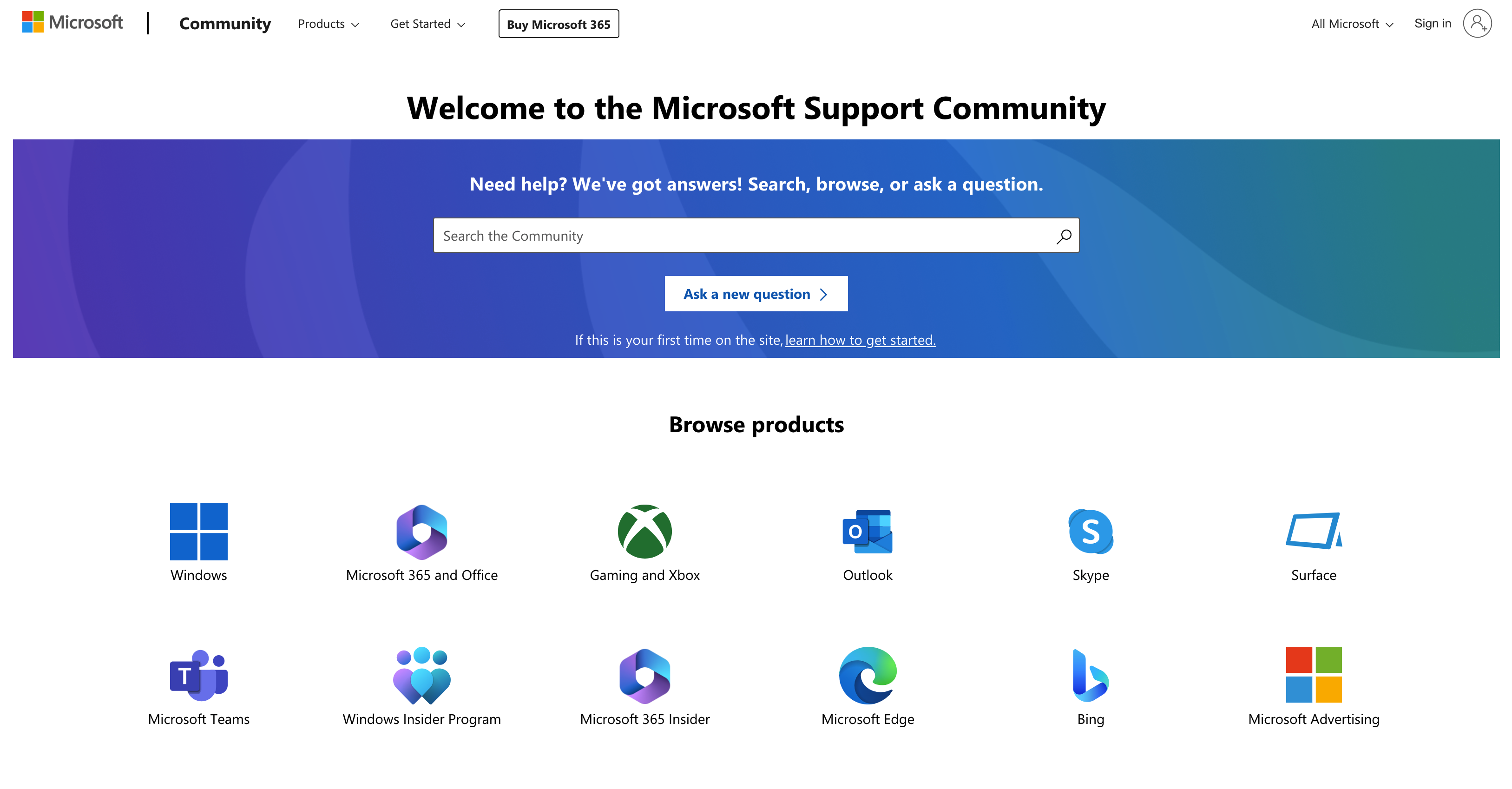
While providing our services in UX Research for the community consultancy company FeverBee, I took on a variety of projects for FeverBee’s clients. These included Microsoft, Pipedrive, CXL, Combient, and CyberArk to name some.
The core of my work was of course focused on studying user experience for the specific clients, however, since FeverBee is a community consultancy, my work also expanded to understanding the community experience of the target platforms. In essence, I researched how community members experienced their respective communities both as a software experience and as a human experience of belonging to a community – what were their wishes, aspirations, and challenges regarding them. For this task, Richard guided me to read through his book Build Your Community, which gave me a kickstart for the specific field of community consultancy.

Microsoft wanted to figure out how to improve the community experience of their Support Community. To achieve this, FeverBee offered a user research project to discover what was working and what needed improvement.
I took on the responsibility of conducting user research on their target user group from start to finish. First, I started with writing the script for the user studies. I used my standard method to do observational Think Aloud user interviews (link) combining perceptions of the community experience and actual test runs on the community platform to complete common user scenarios. This way I could get a clear understanding of how they felt about the community and also saw how they used the community.

The second step was recruitment. We utilised our network within FeverBee to reach out to potential test users. After gathering enough participants, I scheduled the interviews and got to the essence of it.
In the interviews I observed that some of the key functions of the community had low efficiency – that is, participants struggled to complete the tasks. Some users would even resort to Google to figure out how to ask a question in the community, showing that the function was not obvious to discover for users.

After gathering all the interview data, I set out to create a report of the findings. Among the difficulty of finding the Ask Question function were difficulty searching for a specific question on the community page itself as opposed to using a search engine. While using search engines in favour of the internal search functions of communities is not terribly rare, the users showed a certain blindness to the search function in the community platform. On the positive side, some users commended the minimal aesthetic on the community website.
Microsoft’s team gave us stellar feedback for our work and were thankful for the insights we could provide for their community experience. For me personally, working on a project for Microsoft was a big win as it was easily the biggest client I worked with and I was delighted to hear they were grateful for the insights I could provide.


